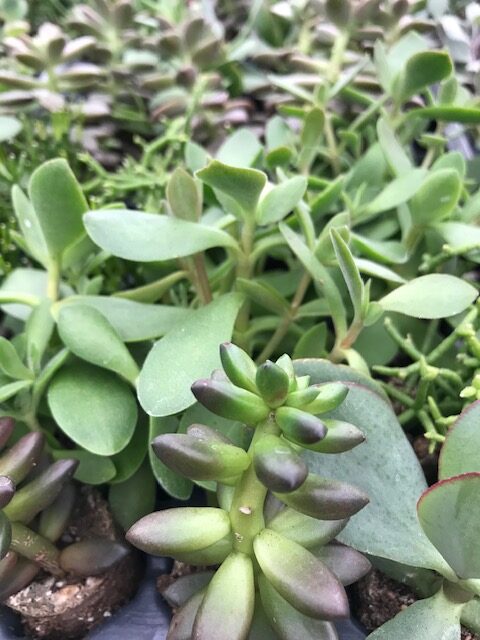Talking Plants
Jillian Patrie | University of Minnesota Yard and Garden Extension
The weather has turned, and plant enthusiasts will be shifting their attention to indoor plants during the cold winter months to come. Houseplants provide us with many benefits including mental wellbeing, air purification and food if we are growing things like herbs indoors. As many houseplant collections come indoors for the winter, pests hitch a ride for a warm place to live. Let’s talk more about how to avoid bringing unwanted guests indoors and potential pest outbreaks.
There are a few major houseplant pests that are commonly seen in collections and can cause big problems when it comes to controlling them. The number one offender is spider mites. These tiny plant pests thrive in warm, dry conditions and environments are perfect in homes during the winter. They are hard to spot until their populations become large enough to see webbing, leaf damage and the mite themselves. Scout regularly. Check your plants by gently tapping leaves over a white piece of paper and look for orange specks. “Washing” your houseplants regularly during the winter months can keep them at bay. Horticultural Oils and Insecticidal soaps will help with population control and are generally safe for indoor use (always follow pesticide use labels). Selecting plants that are less prone to spider mites is another alternative method to keeping this pest out of your home. Succulents and cacti, pothos, Sansevieria (snake plant), hoya and ferns tend to experience less spider mite issues. Palms, philodendron and figs are houseplants that tend to see more spider mite outbreaks, though all these plants can become infested.
Mealybugs are the second biggest houseplant pest and can be nearly impossible to eliminate. These houseplant pests look like little fuzzy puffs and can produce a sticky substance called honeydew on leaves. They like to hide in hard to see and reach places like where the base of a leaf meets the stem. When populations are large enough, they will cover all parts of the plant. They can also live on containers and other plant related supplies. Scouting is key as well as quarantining new additions to plant collections. The physical makeup of the mealybug makes it difficult to control with insecticides, however horticulture oils and some houseplant systemic insecticides can work to prevent or control low populations.
Fungus gnats are another common pest of houseplants everywhere. Though they closely resemble fruit flies, they are not the same. Fungus gnats feed on fungi found in soils and are more common in soils that are continuously wet. Fungus gnats do not generally cause damage to plants but are more of a nuisance. In severe fungus gnat cases, root damage can occur, however there are likely other factors such as root rot from overwatering that are causing plant health issues. Let soil dry to an appropriate level between waterings based on the care required for the type of plants in your collection. Yellow sticky traps will collect adult fungus gnats and prevent them from laying eggs in the soil. Since fungus gnats live mainly in soil, using a soil applied insect control can help manage egg populations. One common active ingredient for control is BT or Bacillus thuringiensis. Repotting with fresh soil in a clean container can help control fungus gnats as well.
For more information on controlling indoor houseplant pests check out this UMN-Extension page https://extension.umn.edu/product-and-houseplant-pests/insects-indoor-plants.
For information on this article or local assistance please contact Clay County Extension Educator Jill Patrie at 218-299-7338 or by email at patri350@umn.edu.


